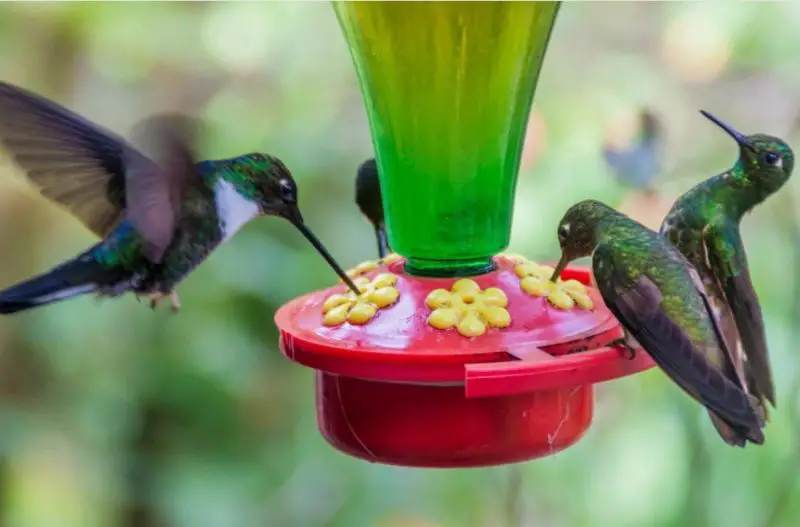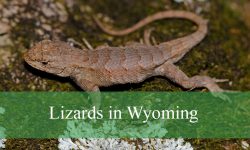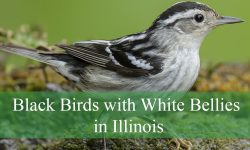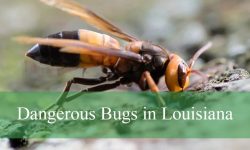Hummingbirds are fascinating creatures that bring life and vibrancy to any garden. Providing them with a steady source of nectar will not only attract these tiny birds but also help sustain them. While store-bought nectar is available, making your own hummingbird nectar is easy, cost-effective, and free of harmful additives.
In this article, we will explore five delicious hummingbird nectar recipes to keep your feathered visitors happy and healthy.
Why Homemade Nectar is the Best Choice

Before we dive into the recipes, let’s explore why homemade nectar is a superior option for feeding hummingbirds.
Healthier Alternative to Store-Bought Nectar
Many commercial nectar products contain artificial dyes and preservatives that may be harmful to hummingbirds. By making your own nectar, you ensure that it is free from additives, making it a safer choice for these delicate birds.
Cost-Effective and Simple
Homemade nectar requires only a few basic ingredients, making it a budget-friendly option. Plus, you can easily make it in large batches to keep your feeders filled.
Encourages Regular Visits from Hummingbirds
Consistently providing a fresh, clean nectar source will encourage hummingbirds to return to your garden regularly. Over time, you may find that these birds remember your feeding station and visit year after year.
Essential Ingredients for Hummingbird Nectar
Before getting started with the recipes, let’s look at the essential ingredients you will need:
- Water: Fresh, clean water is the base of all hummingbird nectar recipes.
- Sugar: Plain white granulated sugar is the best choice. Avoid using honey, brown sugar, or artificial sweeteners as they can be harmful to hummingbirds.
- Optional Natural Additives: Some recipes include fruit juices or herbal infusions for added nutrients, but always ensure that these are safe for hummingbirds.
Now, let’s get into the recipes!
1. Classic Hummingbird Nectar Recipe
This is the simplest and most commonly used nectar recipe, designed to closely mimic the natural sugar content found in flower nectar. By providing this homemade nectar, you can attract hummingbirds to your garden while ensuring they receive a safe and nutritious energy source.
Ingredients:
- 4 cups water
- 1 cup white granulated sugar
Instructions:
- Boil the Water
In a medium saucepan, bring 4 cups of water to a rolling boil. Boiling helps to remove impurities and ensures the sugar dissolves completely. - Dissolve the Sugar
Remove the saucepan from heat and carefully stir in 1 cup of white granulated sugar. Continue stirring until the sugar is fully dissolved, creating a clear, sweet syrup. - Cool the Nectar
Allow the mixture to cool to room temperature before using. Pouring hot nectar into your feeder can damage it and may be harmful to birds. - Fill the Feeder
Once cooled, fill your clean hummingbird feeder with the fresh nectar. Make sure the feeder is securely assembled to prevent leaks. - Store Leftover Nectar
If you have extra nectar, store it in a clean, airtight container in the refrigerator for up to one week. Before refilling the feeder, give the nectar a quick stir and let it reach room temperature.
Tips for Success:
- Avoid Red Dye: Hummingbirds are naturally attracted to the red color of feeders, so artificial dyes are unnecessary and may be harmful.
- Use White Sugar Only: Do not substitute honey, brown sugar, or artificial sweeteners, as they can be dangerous for hummingbirds.
- Clean Feeders Regularly: To prevent mold and bacteria growth, clean your feeder thoroughly every few days, especially in hot weather.
2. Electrolyte-Boosted Hummingbird Nectar
Hummingbirds have incredibly fast metabolisms and high energy needs, making hydration and electrolyte balance crucial for their well-being. Adding a small amount of unflavored Pedialyte or a homemade electrolyte mix helps replenish essential minerals, keeping these tiny birds energized and hydrated.
Ingredients:
- 4 cups water
- 1 cup white granulated sugar
- 1 teaspoon unflavored Pedialyte or a homemade electrolyte mix (a pinch of salt and baking soda)
Instructions:
- Boil the Water
In a medium saucepan, bring 4 cups of water to a boil. This removes impurities and ensures the sugar dissolves completely. - Dissolve the Sugar
Remove the pan from heat and stir in 1 cup of white granulated sugar until fully dissolved. The mixture should be completely clear. - Cool the Nectar
Allow the nectar to cool to room temperature before proceeding to the next step. Hot liquid can degrade the electrolyte solution and harm the birds. - Add Electrolytes
Once cooled, stir in 1 teaspoon of unflavored Pedialyte or a homemade electrolyte mix made of a pinch of salt and a pinch of baking soda. Mix thoroughly to ensure even distribution. - Fill the Feeder
Pour the prepared nectar into a clean hummingbird feeder. Make sure the feeder is securely closed to prevent leaks. - Store Leftovers
Any unused nectar should be stored in a clean, airtight container in the refrigerator for up to one week. Before refilling the feeder, let the nectar reach room temperature and give it a quick stir.
Tips for Success:
- Use Only Unflavored Electrolytes: Flavored Pedialyte or sports drinks contain additives that may be harmful to hummingbirds. Stick to plain, unflavored options.
- Do Not Add Too Much Salt: Excess salt can be dangerous for hummingbirds, so only use a tiny pinch when making a homemade electrolyte mix.
- Keep Feeders Clean: To prevent mold and bacterial growth, wash your feeder with warm soapy water every few days, especially in hot weather.
3. Vitamin C-Infused Nectar
Hummingbirds rely on a steady diet of nectar and insects to maintain their health and energy levels. Adding a small amount of vitamin C (ascorbic acid) to their nectar may help support their immune system and overall well-being, especially during migration or stressful conditions.
Ingredients:
- 4 cups water
- 1 cup white granulated sugar
- 1/8 teaspoon vitamin C powder (ascorbic acid)
Instructions:
- Boil the Water
In a medium saucepan, bring 4 cups of water to a boil. Boiling helps eliminate impurities and ensures the sugar dissolves completely. - Dissolve the Sugar
Remove the saucepan from heat and stir in 1 cup of white granulated sugar. Stir until fully dissolved, creating a clear, sweet nectar. - Cool the Mixture
Let the nectar cool to room temperature. Adding vitamin C to hot liquid may degrade its effectiveness. - Add Vitamin C
Once cooled, stir in 1/8 teaspoon of vitamin C powder (ascorbic acid). Mix thoroughly to ensure even distribution. - Fill the Feeder
Pour the prepared nectar into a clean hummingbird feeder, making sure the feeder is securely assembled to prevent leaks. - Store Leftovers
Store any unused nectar in a clean, airtight container in the refrigerator for up to one week. Before refilling the feeder, let the nectar reach room temperature and stir it well.
Tips for Success:
- Use Pure Ascorbic Acid: Avoid vitamin C supplements that contain added flavors, preservatives, or artificial sweeteners, as they may be harmful to hummingbirds.
- Do Not Overdo It: Excess vitamin C can alter the pH of the nectar, making it less appealing or potentially irritating to hummingbirds. Stick to the recommended amount.
- Keep Feeders Clean: Regularly clean your feeder with warm soapy water to prevent mold, bacteria, and fermentation.
4. Fruit-Infused Hummingbird Nectar
Hummingbirds naturally consume small amounts of fruit juice in the wild, either by sipping from overripe fruit or feeding on tree sap mixed with fruit sugars. This fruit-infused nectar recipe introduces additional nutrients while closely mimicking the natural variety in their diet.
Ingredients:
- 3 cups water
- 1 cup white granulated sugar
- 1/2 cup natural fruit juice (such as grape, apple, or orange juice)
Instructions:
- Boil the Water
In a medium saucepan, bring 3 cups of water to a rolling boil. Boiling helps remove impurities and ensures the sugar dissolves completely. - Dissolve the Sugar
Remove the saucepan from heat and stir in 1 cup of white granulated sugar. Mix until fully dissolved, creating a clear, sweet nectar base. - Cool the Mixture
Allow the nectar to cool to room temperature before adding the fruit juice. Adding juice while the mixture is still hot may break down some nutrients and alter the flavor. - Add Fruit Juice
Stir in 1/2 cup of natural fruit juice. Choose unsweetened, pure juice without artificial additives, flavors, or preservatives, as these can be harmful to hummingbirds. - Strain if Necessary
If the juice contains pulp or sediment, strain the nectar through a fine mesh sieve or cheesecloth to ensure it remains smooth and clog-free for your feeder. - Fill the Feeder
Pour the prepared nectar into a clean hummingbird feeder. Make sure the feeder is securely closed to prevent leaks and attract birds safely. - Store Leftovers
Store any extra nectar in a clean, airtight container in the refrigerator for up to three days. Because fruit juice ferments faster than sugar water, avoid storing it for extended periods.
Tips for Success:
- Use Mild Juices: Grape, apple, and pear juice are good options, as they are naturally sweet without being too acidic. Avoid citrus juices like orange if your feeder is made of metal, as acidity can react with some materials.
- Avoid Artificial Additives: Ensure the fruit juice is 100% pure with no added sugar, preservatives, or artificial colors.
- Change Nectar Frequently: Due to the natural sugars in fruit juice, this nectar ferments more quickly than classic sugar water. Clean your feeder and replace the nectar every 1-2 days in warm weather.
5. Herbal Hummingbird Nectar
Infusing hummingbird nectar with fresh herbs like mint or basil not only enhances its appeal but may also provide mild health benefits. Many herbs contain natural antioxidants and compounds that can support digestion and overall well-being in birds. Additionally, the subtle fragrance of herbs can help attract hummingbirds to your feeder.
Ingredients:
- 4 cups water
- 1 cup white granulated sugar
- A few fresh mint or basil leaves
Instructions:
- Boil the Water with Herbs
In a medium saucepan, bring 4 cups of water to a boil. Once boiling, add a few fresh mint or basil leaves. Reduce heat and let the herbs steep for about 10 minutes to release their natural oils and aroma. - Strain the Herbs
After steeping, remove the herbs by straining the infused water through a fine mesh sieve or cheesecloth. This prevents any solid particles from clogging your feeder. - Dissolve the Sugar
While the herb-infused water is still warm, stir in 1 cup of white granulated sugar. Continue stirring until the sugar is completely dissolved, creating a smooth nectar. - Cool the Mixture
Allow the nectar to cool to room temperature before filling your hummingbird feeder. Hot nectar can damage feeders and may be harmful to birds. - Fill the Feeder
Pour the prepared nectar into a clean hummingbird feeder, making sure the feeder is properly assembled to prevent leaks. - Store Leftovers
Any extra nectar should be stored in a clean, airtight container in the refrigerator for up to a week. Before refilling your feeder, let the nectar reach room temperature and stir it well.
Tips for Success:
- Choose Fresh Herbs: Use fresh, organic herbs without pesticides or chemicals. Mint and basil are excellent choices, but you can also experiment with lavender or lemon balm.
- Do Not Use Essential Oils: Essential oils are too concentrated and can be harmful to hummingbirds. Stick to fresh or dried whole herbs.
- Clean Feeders Regularly: Herbal nectar may leave slight residues, so be sure to clean your feeder every few days to prevent mold and bacterial growth.
Tips for Maintaining a Healthy Hummingbird Feeder
To keep your feathered friends safe and happy, follow these essential tips:
Keep the Feeder Clean
Dirty feeders can develop mold and bacteria, which are harmful to hummingbirds. Clean your feeder at least once a week with warm soapy water and rinse thoroughly.
Change the Nectar Regularly
Especially in hot weather, nectar can ferment quickly. Replace the nectar every 2-3 days to ensure freshness.
Avoid Artificial Dyes
There is no need to add red dye to your nectar. Hummingbirds are naturally attracted to the color red, and most feeders already have red parts that draw their attention.
Place Feeders in Safe Locations
Hang your feeders in shaded areas to slow nectar spoilage and keep hummingbirds comfortable while they feed. Avoid placing them too close to windows to prevent bird collisions.
Conclusion
Creating homemade hummingbird nectar is a simple and rewarding way to attract these beautiful birds to your garden. Whether you stick with the classic recipe or experiment with fruit and herbal infusions, your hummingbirds will appreciate the effort. By maintaining a clean and fresh nectar source, you will ensure that these tiny creatures return year after year, filling your garden with their mesmerizing presence.






